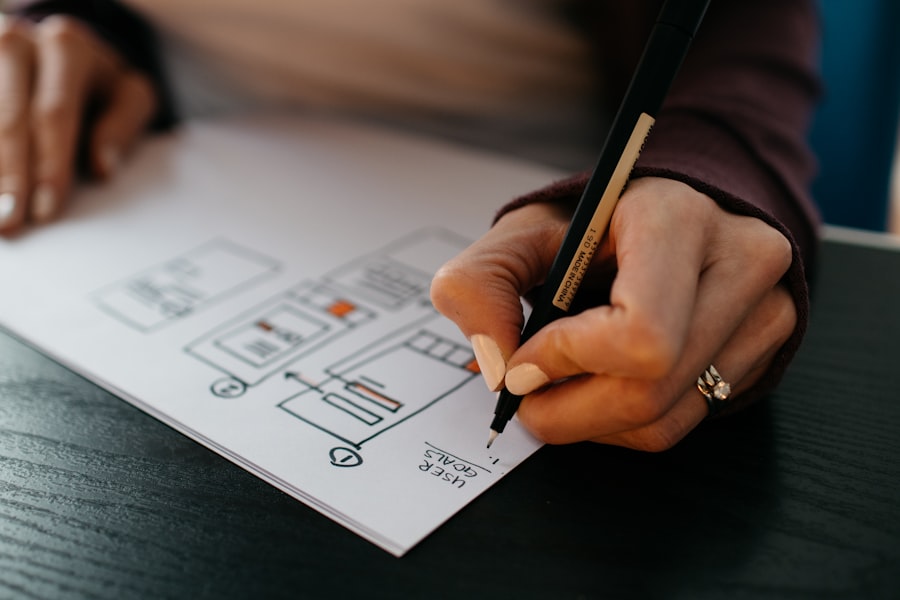User experience (UX) is a critical aspect of web design that focuses on how users interact with a website or application. It encompasses every element of the user’s journey, from the moment they land on a page to the actions they take and the emotions they feel throughout their visit. A well-designed user experience not only enhances user satisfaction but also drives engagement, conversions, and ultimately, business success.
Understanding the nuances of user experience involves recognizing the needs and expectations of your audience, as well as the context in which they are using your site.
To create an effective user experience, it is essential to consider various factors, including usability, accessibility, and aesthetics.
Usability refers to how easily users can navigate and interact with your site, while accessibility ensures that all users, including those with disabilities, can access your content.
Aesthetics play a significant role in first impressions; a visually appealing design can captivate users and encourage them to explore further. By prioritizing these elements, you can create a seamless experience that resonates with your audience and keeps them coming back for more.
Key Takeaways
- User experience is crucial for website success, focusing on ease of use and satisfaction.
- Simplify navigation to make it easy for users to find what they are looking for.
- Choose a clean and readable layout to enhance user experience and readability.
- Utilize responsive design to ensure your website looks good on all devices.
- Incorporate call-to-action buttons to guide users towards desired actions.
Simplifying Navigation
Navigation is the backbone of any website, guiding users through its content and helping them find what they need quickly and efficiently. Simplifying navigation is crucial for enhancing user experience, as complex or cluttered menus can lead to frustration and increased bounce rates. A well-structured navigation system should be intuitive, allowing users to understand where they are and how to get to their desired destination without confusion.
One effective strategy for simplifying navigation is to limit the number of menu items. By focusing on the most important sections of your site, you can reduce cognitive overload and make it easier for users to make decisions. Additionally, employing clear labels for each menu item can further enhance understanding.
Consider using descriptive terms that reflect the content users will find within each section. This clarity not only aids navigation but also improves search engine optimization (SEO) by aligning your site’s structure with user intent.
Choosing a Clean and Readable Layout
A clean and readable layout is essential for ensuring that users can easily consume your content. When designing your website, prioritize whitespace, which helps to separate different elements and makes the overall design feel less cluttered. A layout that incorporates ample whitespace allows users to focus on the content without feeling overwhelmed by visual noise.
This approach not only enhances readability but also contributes to a more aesthetically pleasing design. In addition to whitespace, selecting appropriate fonts and font sizes is crucial for readability. Choose fonts that are easy to read on both desktop and mobile devices, and ensure that there is sufficient contrast between the text and background colors.
A well-chosen color palette can enhance the overall user experience by creating a visually harmonious environment that encourages users to engage with your content. By focusing on these elements, you can create a layout that is not only visually appealing but also functional and user-friendly.
Utilizing Responsive Design
| Device | Screen Size | Percentage of Users |
|---|---|---|
| Mobile | Less than 768px | 50% |
| Tablet | 768px – 1024px | 20% |
| Desktop | 1024px and above | 30% |
In today’s digital landscape, responsive design is no longer optional; it is a necessity. With an increasing number of users accessing websites from various devices—ranging from smartphones to tablets and desktops—ensuring that your site adapts seamlessly to different screen sizes is crucial for maintaining a positive user experience. Responsive design involves creating a flexible layout that automatically adjusts based on the device being used, providing an optimal viewing experience regardless of screen size.
Implementing responsive design not only enhances usability but also positively impacts SEO. Search engines like Google prioritize mobile-friendly websites in their rankings, meaning that a responsive design can improve your visibility in search results. Additionally, a consistent user experience across devices fosters trust and encourages users to engage with your content more deeply.
By investing in responsive design, you are not only catering to your audience’s needs but also positioning your site for long-term success in an increasingly mobile-centric world.
Incorporating Call-to-Action Buttons
Call-to-action (CTA) buttons are essential elements of web design that guide users toward taking specific actions, such as signing up for a newsletter, making a purchase, or downloading a resource. Effective CTAs are strategically placed throughout your site and designed to stand out visually while clearly communicating the desired action. The language used in CTAs should be action-oriented and compelling, encouraging users to take the next step without hesitation.
When designing CTAs, consider their placement within the layout. They should be easily accessible without disrupting the flow of content. For instance, placing CTAs at the end of blog posts or within sidebars can effectively capture user attention when they are most engaged.
Additionally, using contrasting colors for CTA buttons can help them stand out against the background, making it easier for users to identify them. By thoughtfully incorporating CTAs into your design, you can significantly enhance user engagement and drive conversions.
Optimizing Load Times
Identifying Factors that Affect Page Speed
To optimize load times, it is essential to assess various factors that contribute to page speed, including image sizes, server response times, and the use of caching techniques.
Optimizing Images and Leveraging Browser Caching
One effective way to improve load times is by compressing images without sacrificing quality. Large image files can significantly slow down page loading; therefore, using tools to optimize images for web use can enhance performance. Additionally, leveraging browser caching allows returning visitors to load pages faster by storing certain elements locally on their devices.
Improving User Experience and SEO Performance
By prioritizing load time optimization, you not only improve user experience but also enhance your site’s SEO performance, as search engines favor fast-loading websites.
Implementing Mobile-Friendly Features
As mobile usage continues to rise, implementing mobile-friendly features is essential for providing an optimal user experience across devices. Mobile-friendly design goes beyond responsive layouts; it involves considering how users interact with your site on smaller screens and ensuring that all elements are easily accessible and functional. This includes optimizing buttons for touch interactions, ensuring text is legible without zooming, and simplifying forms for mobile users.
Incorporating features such as click-to-call buttons can significantly enhance the mobile experience for users who may want immediate assistance or information. Additionally, ensuring that navigation menus are easy to use on touch screens can prevent frustration and encourage exploration of your site’s content. By focusing on mobile-friendly features, you cater to the growing number of users accessing your site via smartphones and tablets, ultimately improving engagement and satisfaction.
Testing and Gathering Feedback
The final step in creating an exceptional user experience involves testing your website and gathering feedback from real users. Conducting usability tests allows you to observe how users interact with your site in real-time, providing valuable insights into areas that may need improvement. This process can reveal pain points that you may not have considered during the design phase and help you make informed decisions about necessary adjustments.
In addition to usability testing, actively seeking feedback from users through surveys or feedback forms can provide further insights into their experiences. Understanding what users appreciate about your site—and what they find frustrating—can guide future enhancements and ensure that you are continually meeting their needs. By prioritizing testing and feedback collection, you create a culture of continuous improvement that ultimately leads to a more effective and engaging user experience.
In conclusion, creating an exceptional user experience requires a multifaceted approach that encompasses understanding user needs, simplifying navigation, choosing clean layouts, utilizing responsive design, incorporating effective CTAs, optimizing load times, implementing mobile-friendly features, and continuously testing and gathering feedback. By focusing on these key areas, you can build a website that not only meets but exceeds user expectations—ultimately driving engagement and success for your business in the digital landscape.
If you are looking to improve your website design, you may also be interested in enhancing your online presence through listing management services. Singler Design offers a listing management service that can help boost your visibility on various online platforms. By signing up for this service, you can ensure that your business information is accurate and consistent across the web. To learn more about how listing management can benefit your website design, check out this article.
FAQs
What is web design?
Web design is the process of creating the visual and functional elements of a website. This includes layout, color scheme, graphics, and user interface design.
Why is web design important?
Web design is important because it directly impacts how users perceive a website and how they interact with it. A well-designed website can improve user experience, increase engagement, and drive conversions.
What are the key principles of web design?
The key principles of web design include visual hierarchy, usability, navigation, and consistency. These principles help to create a website that is easy to use and visually appealing.
What are the different elements of web design?
The different elements of web design include layout, color scheme, typography, images, and interactive elements such as buttons and forms.
What are the current trends in web design?
Current trends in web design include minimalism, bold typography, mobile-first design, and the use of animations and micro-interactions to enhance user experience.
What are the best practices for web design?
Best practices for web design include creating a responsive design, optimizing for speed and performance, using intuitive navigation, and ensuring accessibility for all users, including those with disabilities.
What are the different tools and technologies used in web design?
Web designers use a variety of tools and technologies, including graphic design software such as Adobe Photoshop and Illustrator, web development languages such as HTML, CSS, and JavaScript, and content management systems such as WordPress and Drupal.








